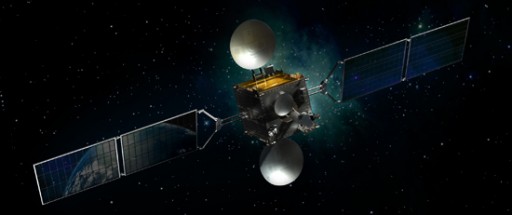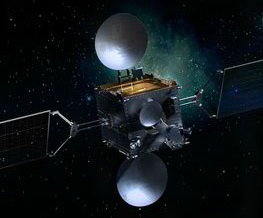ARSAT-1

ARSAT-1 is an Argentinean communications satellite built by INVAP S.E. and operated by the newly founded AR-SAT company. The project was initiated under the SSGAT program to produce the first Argentine Geostationary Telecommunications Satellite.
INVAP is the prime contractor for the ARSAT-1 spacecraft, responsible for project management, engineering development and the integration of all satellite and ground system components. The all Ku-Band communications payload was supplied by Thales Alenia Space while the central cylinder, the solar arrays, the Satellite Processing Unit and the propulsion system was provided by Airbus Defence and Space (formerly Astrium).
The spacecraft uses the new ARSAT Bus for light and medium-weight communication satellites. The spacecraft uses a central satellite body that hosts all satellite systems including two deployable solar arrays, two large antenna reflectors and an Earth-facing deck hosting other payload elements. ARSAT-1 has a total mass of 2,985 Kilograms and measures 2.0 by 1.8 by 3.9 meters in its stowed configuration with a span of 16.5 meters when deployed in orbit.
Power is generated by two deployable solar arrays, each consisting of two panels. Power is stored in batteries and distributed to the various satellite systems by dedicated EPS units. The spacecraft is three-axis stabilized using reaction wheels and a series of attitude determination sensors for precise pointing including an Inertial Measurement Unit, Star Trackers, Earth and Sun Sensors.
A chemical propulsion system is used for apogee-raising and stationkeeping in Geostationary Orbit for a minimum service life of 15 years.

The satellite uses an S400 main propulsion system and S10 attitude control thrusters, each delivering 10N of thrust. The S400 series built by EADS Astrium are bi-propellant engines using Monomethylhydrazine and Mixed Oxides of Nitrogen as propellants. Depending on the version used, S400 provides 420 to 425 Newtons of Thrust with a specific impulse of 318-321 seconds.
ARSAT-1 hosts an all Ku-Band payload consisting of 24 active transponders, 12 of which operate at 35MHz, eight operate at 54Mhz and four work at 72MHz. The communications payload has a total power of 3.5kW. The satellite will deliver a variety of communication services including data, telephone and television to South American countries including Argentina, Chile, Uruguay, Paraguay and Bolivia.
The satellite will operate from an orbital position of 71.8 degrees once fully operational. ARSAT-2 will be stationed at 81 degrees West, currently aiming to follow the first ARSAT in the near future.
In addition to its communications payload, the ARSAT-1 satellite includes a series of experimental payloads to take advantage of having a spacecraft in Geostationary Orbit to learn more about the environment which will be useful for the construction of future satellites.
The space radiation experiment known by its Spanish acronym of MARE is designed to detect charged particles, particularly electrons, protons and Alpha Particles at an energy range of 0 to 100 MeV. This will lead to valuable data on the radiation environment in Geostationary Orbit with particular interest on space weather phenomena. The payload is comprised of a Low Energy Detector, a Particle Telescope and a High-Energy Detector.
The Fluorescence Sensor is also installed on the satellite consisting of a 15-centimeter Ultraviolet Telescope using photomultipliers as detectors. It will be used for a variety of UV measurements to be used in the calibration of ground-based UV observatories and fluorescence telescopes.
The final payload is a technical demonstration of an indigenously produced solar panel that is installed on the satellite to acquire data on power output degradation as a result of space radiation. The solar arrays for ARSAT-1 were procured from an outside contractor, however, there is a strong desire in Argentina to be able to manufacture solar panels suitable for Geostationary satellites. Therefore, a solar cell design is tested by ARSAT-1 that will likely be used on future ARSAT spacecraft.
